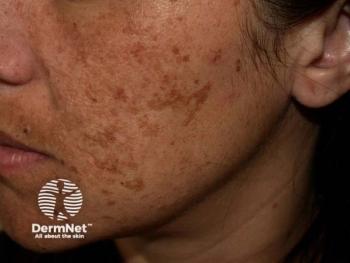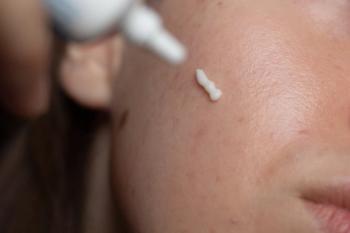
Leaving Home Sparks New Challenges in Atopic Dermatitis Care
Key Takeaways
- Young adults face psychosocial and economic challenges in transitioning to self-management of atopic dermatitis, impacting treatment adherence and mental well-being.
- Misconceptions about topical corticosteroids, fueled by social media, lead to misuse, highlighting the need for better education on safe steroid use and dosing.
Expanded prescribing rights for pharmacists could ease treatment delays and improve access for AD patients.
While treatment goals for atopic dermatitis (AD) focus on symptom control rather than cure, the transition from parent-led management to self-directed care introduces unique challenges for young adults.1 A recent qualitative study explored the lived experiences of 25 young adults in the United Kingdom, highlighting how this patient group navigates AD self-management, perceives treatment, and engages with community pharmacy services.2
Transitioning to Self-Management
Most participants described assuming full responsibility for their AD care around the age of 18, often coinciding with leaving home or starting university. While increased independence encouraged proactive treatment behaviors and in some cases improved adherence, researchers found the transition was also associated with psychosocial strain. Several participants reported stress, anxiety, and a sense of frustration when flare-ups disrupted daily life. Environmental and lifestyle triggers—such as climate, allergens, detergents, or dietary factors—were identified more readily once individuals began managing their care independently.
Economic considerations also emerged. The cost of prescriptions, unavailability of certain treatments, and the need to purchase alternative therapies out-of-pocket were barriers that complicated self-management. For international students, the study found adjusting to differences in formulary availability between home and host countries posed further challenges.
Treatment Concerns and Misconceptions
Concerns surrounding the use of topical corticosteroids (TCs) were widespread. Many participants reported fears of skin thinning, systemic absorption, or “topical steroid withdrawal syndrome,” a concept amplified through social media. This led to underuse or highly restricted use of TCs, despite guideline recommendations. Conversely, researchers noted a few participants admitted to overuse, particularly on sensitive areas like the face, reflecting knowledge gaps in appropriate application. Awareness of fingertip unit (FTU) dosing was limited, and several participants noted they had never received clear instruction from health care professionals.
The study also revealed significant psychosocial impacts tied to visible disease. Stigma, bullying, and embarrassment about skin appearance—especially when lesions were on the face—were recurring themes. These concerns influenced treatment decisions, according to researchers, with some young adults overusing topical therapies in attempts to conceal symptoms. The persistence of appearance-related anxiety from adolescence into early adulthood underscores the importance of integrating mental health support into dermatologic care.
Community Pharmacy
Despite community pharmacists (CPs) being accessible health care professionals, participants reported limited engagement with pharmacies for AD advice. Pharmacies were primarily viewed as dispensaries for prescriptions rather than sources of clinical guidance. Many participants stated they would only consider consulting a pharmacist for mild cases and preferred general practitioners or dermatologists for more severe concerns.
However, a key finding was that young adults expressed greater willingness to seek pharmacist input if CPs could prescribe AD treatments. With UK pharmacists gaining independent prescribing rights by 2026, this evolving role may offer a practical solution to the access challenges young adults face, particularly the long waits for general practitioner or specialist appointments. Participants emphasized that timely treatment access was often more valued than receiving in-depth counseling, though they acknowledged trust in pharmacists’ knowledge once prescribing authority was introduced.
Clinical Implications
For clinicians, these findings highlight several actionable points:
- Education on safe steroid use remains critical. Misconceptions about TCs—both underuse and overuse—could compromise treatment outcomes. Clear guidance on FTU dosing and risk–benefit communication should be routinely integrated into consultations.
- Psychosocial impact requires attention. Visible disease continues to affect confidence and mental well-being into adulthood. Addressing cosmetic concerns and offering psychological support may improve adherence and overall outcomes.
- Community pharmacists represent an untapped resource. With prescribing rights expanding, pharmacists may alleviate barriers to timely treatment access. However, raising awareness among young adults about pharmacists’ expertise will be necessary to maximize their role in AD care.
Conclusion
Young adults with AD face a complex interplay of clinical, psychosocial, and economic challenges as they transition to independent self-management. While many report improvements in autonomy and treatment adherence, concerns around therapy safety, stigma, and fragmented access to care remain significant barriers. The forthcoming expansion of community pharmacists’ prescribing authority presents an opportunity to bridge gaps in timely treatment access. For dermatologists, general practitioners, and pharmacists alike, prioritizing education, addressing psychosocial needs, and fostering collaborative care pathways may help support young adults as they learn to manage their condition with confidence.
References
- Greenwell K, Ghio D, Muller I, et al. Taking charge of eczema self-management: a qualitative interview study with young people with eczema. BMJ Open. 2021;11(1):e044005. Published 2021 Jan 6. doi:10.1136/bmjopen-2020-044005
- Cayci AB, Rathbone AP, Richardson CL, Lindsey L. Exploring young adults' experiences of atopic dermatitis self-management and use of community pharmacy: A qualitative study. Health Expect. 2025;28(4):e70378. doi:10.1111/hex.70378
Newsletter
Like what you’re reading? Subscribe to Dermatology Times for weekly updates on therapies, innovations, and real-world practice tips.


















